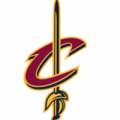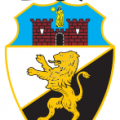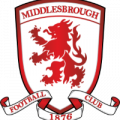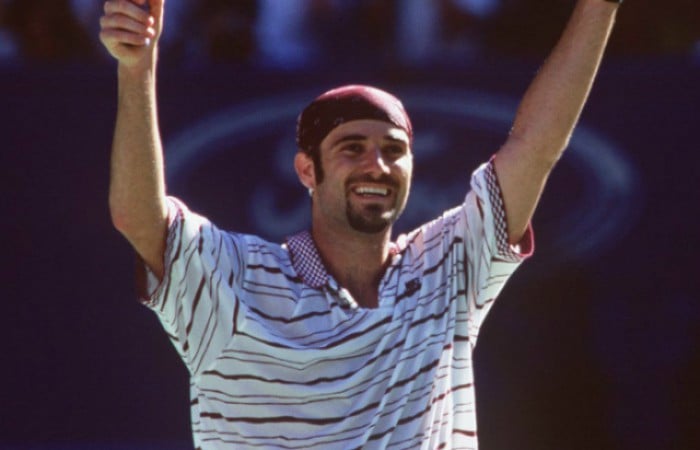With the Australian Open fast approaching, it is time to look back on some of the greatest memories in the history of the Australian Open. In 2016, Novak Djokovic will look to tie Roy Emerson for the most Australian Open singles titles, after breaking a three-way tie for most in the Open Era last year, when he claimed his fifth.
One of the men Djokovic broke the tie with was Andre Agassi. In 2004, Agassi had set the Open Era record with four singles titles in Melbourne. However, it is crazy to think about how Agassi’s dominance down under started. Let’s go back to 1995 and take a look at the beloved American’s first title at the Australian Open.
Welcome to Melbourne
Andre Agassi turned pro in 1986. And yet, in his first nine years on the tour, he never made the trip to Australia for the season’s first major. In his autobiography “Open,” Agassi seldom discusses his decision to skip the Australian Open, briefly mentioning his decision to pull out in 1992 because “now doesn’t seem the time to start.”
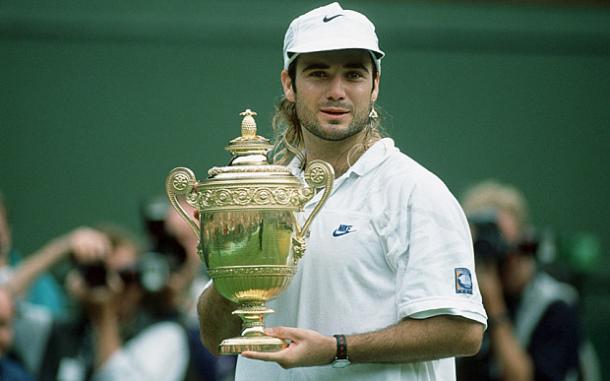
Surely there was no way Agassi would win his first appearance, right? Well, the writing was on the wall for Agassi from the beginning. After all, Agassi had a good record with skipping a tournament for years, only to emerge victorious not long after his return. He had skipped Wimbledon three years in a row from 1988 to 1990, mainly due to his dislike of the grass surface, the all-whites policy, and the general snootiness of Wimbledon. However, he returned in 1991 to reach the quarterfinals. One year later, he was the champion. So when he came to Australia for the first time in 1995, anything was possible.
A New Man
When Andre Agassi arrived in Melbourne in January 1995, he was almost unrecognisable. Gone was his trademark hair. To many people, Andre Agassi was hair. His looks, often consisting of various highlights, colours and styles, made as many headlines as the man wearing them. But during the offseason, Agassi had thrown out his hair piece (unbeknownst to the rest of the world) and shaved his remaining hair. He took to the court with his “pirate look,” consisting of a bandana and a goatee.
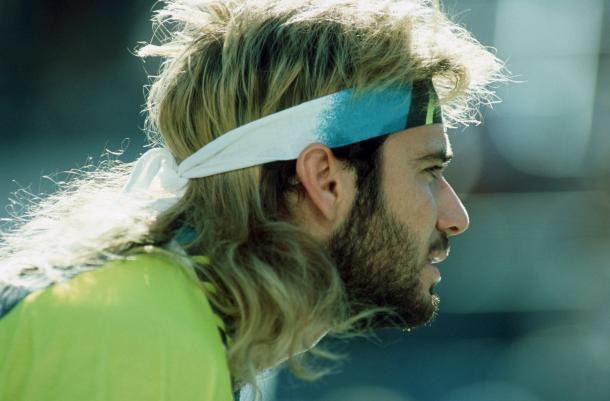
In “Open,” Agassi said of his decision to shave his head “my hairpiece was a shackle, and my natural hair, grown to absurd lengths and dyed three different colors, was a weight as well, holding me down… I feel well rid of if. I feel free.”
“The Incredible Hulk”
Agassi decided to take his new look and debut it at an event he had never played at before, the event that would become his most dominant venue: the hard courts of Melbourne and the Australian Open. As soon as he arrived down under, Agassi lamented having skipped the event so many times before.
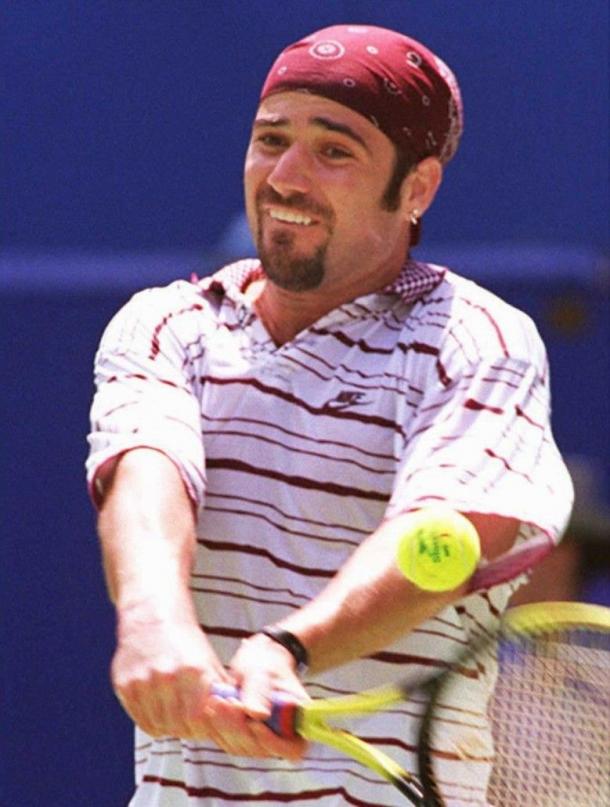
“This is the first time I’ve played in Australia, and I can’t imagine why I’ve waited so long. I like the surface, the venue – the heat. Having grown up in Vegas, I don’t feel the heat the way the way the other players do, and the defining characteristic of the Australian Open is the unholy temperature.”
Agassi liked the Australian, and he played like it. He was untouchable in the early rounds, not dropping a single set in the first six matches. He described himself as playing like “the Incredible Hulk,” blasting opponents off the court. Agassi was pushed to 7-5 only once in the eighteen sets it took him to reach his first final Down Under. The most games he dropped in a match was eight.
And he was not beating no-name opponents either. In the fourth round, he played a home favorite who would become one his biggest rivals, Patrick Rafter. The serve-and-volleying Aussie would become Agassi's favorite rival in the late 1990s but was still two years away from his first of two US Open titles. Agassi’s baseline game was overwhelming and he cruised through to the quarterfinals, winning the third set 6-0.
The quarterfinals saw Agassi pitted against another future world number one, Yevgeny Kafelnikov. The 1999 Australian Open champion came the closest to get a set of off Agassi, pushing him to 7-5 in the second set, but Kafelnikov was overwhelmed in the third set, which Agassi again won 6-0.
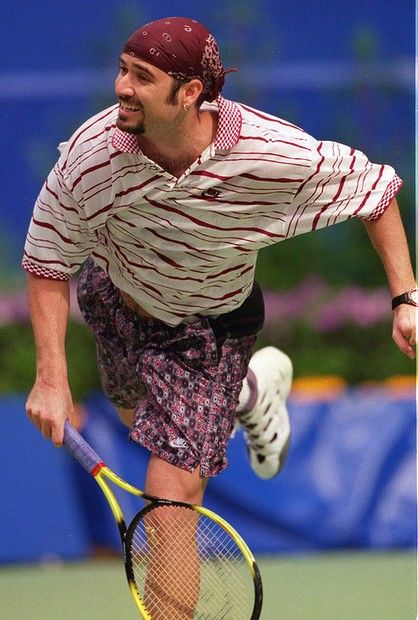
All that was standing between the Hulk and the final was Aaron Krickstein. After a pair of 6-4 sets to start the match, Krickstein was forced to retire in the third set. He was down 3-0 at the time. Agassi had done it. In his first appearance at the Australian Open, he had powered his way into the final. But that was to be no easy task, as he found himself against his nemesis and the reigning champion: Pete Sampras.
Pete’s Pain
The 1995 Australian was not all about Andre Agassi, and the story was not all positive. That year’s event was marred by the tragedy that befell Pete Sampras and his coach Tim Gullikson. Earlier in the tournament, Gullikson had collapsed in the hotel he and Sampras were staying with. He suffered pair of strokes and a tumor, which would claim his life in 1996, had been discovered in his brain.
The day Gullikson was rushed to the hospital, Sampras had to battle Jim Courier in the quarterfinals. Courier jumped out to a two-set lead, but a resilient Sampras fought back. In the fifth set, the emotions got to Sampras. The weight of all that was happening finally was too much for the world number one and he broke down in tears on the court. Courier famous yelled across the net to Sampras “You feeling alright, Pete? We could do the tomorrow, you know.” Sampras did not acknowledge Courier’s offer, but used it as fire. He would roar back to claim the set and the match.
There has been some controversy as to Courier’s comment. Courier insists that the offer was genuine. He says that he felt bad for his countryman and was willing to give him the time he needed to recover. Sampras, however, has remained skeptical saying he believed that it was “light-hearted… but I know Jim.”
In any case, it got Sampras refocused. After his tough quarterfinal win, he went on to comeback again, only this time from a one-set deficit, to beat Michael Chang in the semifinals to set a date with Agassi in the final.
The Dream Final

So here it was, the classic. Sampras vs Agassi. Going into the final, Sampras lead their head-to-head 7-5, 2-1 at majors, and had won their lone major final when he upset Agassi in the 1990 US Open final. Sampras was the defending champion and was playing for his coach. Sampras seemed to have Agassi’s number in big matches, and that trend continued in the 1995 Australian Open final, when he claimed the opening set 6-4.
Between sets, Agassi looked to his coach Brad Gilbert. A frustrated glance from Gilbert helped to get the two-time major champion (at that point) refocus. Agassi began to find some opportunities on Sampras’ serve, later describing Sampras’ serves as grenades with pins still in them. A pair of breaks to the good and Agassi had claimed his first set against Sampras in a major final, blowing past his rival 6-1.
The match would essentially be decided by a third set tiebreak. The momentum swung back and forth. Agassi grabbed the early 3-0 lead before Sampras won four unanswered points for a 4-3 lead. After Agassi evened the score, Sampras won another two points and found himself serving for the set. But Agassi was not to be denied, he evened the breaker at 6-6. Agassi then surprised Sampras by using the world number one’s own tactics against him. He attacked the net on back-to-back points, winning both to claim the set. Suddenly, Agassi was a set away from the title with all the momentum.
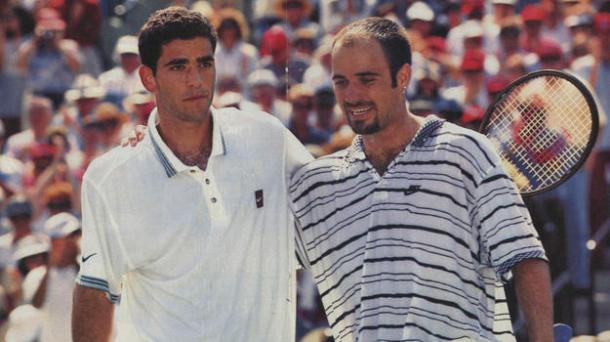
Agassi described the fourth set as “a forgone a conclusion. I keep my foot on the gas and win 6-4. Pete looks resolved. Too much hill to climb. In fact, he’s maddeningly unruffled as he comes to the net.” Agassi had done it. He had won the Australian Open in his debut.
Historical Significance
The title was Agassi’s third Grand Slam singles title. He would go on to claim the number one ranking several months later. Agassi would win three more Australian Open titles in the next eight years, bringing his total to four, which would be an Open Era record until 2015. He was also the last man to win a Grand Slam in his debut for a decade. The next person to do it was Rafael Nadal at the 2005 French Open.
The 1995 victory was Agassi's only Grand Slam final victory over his greatest rival. The tournament was Agassi’s most dominant display of tennis up to that point and arguably remains his best performance at a major in his storied career. However, no matter the history or how impressive his form was, Agassi himself prefers to remember the 1995 Australian Open as his first “bald slam.”
































